How to Photograph Pets – the Best Aperture to Use
If you’re like most people, you love your pets. And if you’re like most people, you also love taking pictures of your pets. But sometimes it can be tricky to get the perfect photo of your furry friend
In this article, we’ll give you top tips on how to photograph pets. We’ll also give some tips on how to make sure that your pet is as comfortable as possible in front of the camera, and how to capture those elusive expressions that make us all laugh. So read on for all the info you need to take amazing photos of your beloved pet!
What Is Aperture and How Can It Be Used to Photograph Pets?
The aperture is the window in the lens that controls how much light does (or doesn't) hit your sensor. The aperture mimics how the eye works.
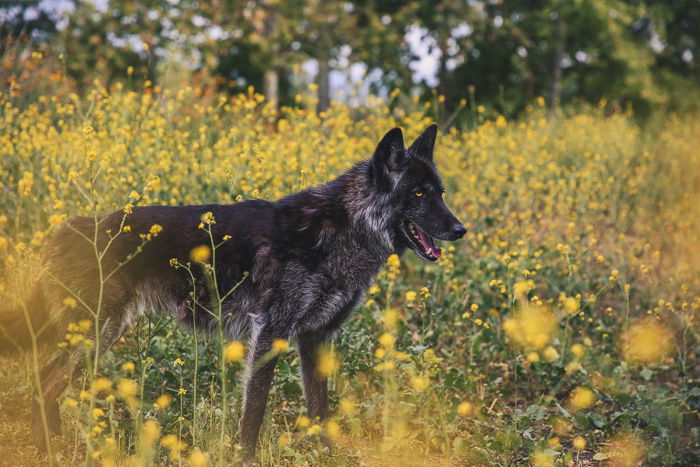
On a lens, the aperture is denoted with f-stop. If you look at a lens, you'll first see the focal length (the millimeter number) followed immediately by the f-number.
This number tells you the widest point that the aperture can go. It may seem counterintuitive but the smaller the number following the F, the wider the aperture.
Lenses with wide apertures are "fast lenses". It means that the lens can reach a specific light exposure faster.
Most professional pet photographers have fast lenses.
How Does Aperture Affect the Image?
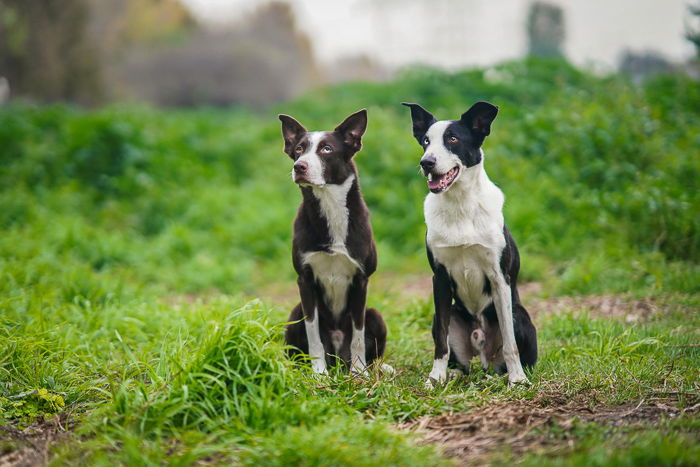
Aperture doesn't just control the amount of light that enters the camera. With a wider aperture comes other types of effects too. Wide apertures cause a shallow depth of field.
The depth of field expresses how much of the image is in focus. Shallow depths of field mean that less in the frame is in focus. For example, a dog is in focus but the background blurs away.
Deep depths of field mean more is in focus. For example, a horse in a wide landscape where everything is sharp and clear.
The wider the aperture, the shallower the depth of field. The narrower the aperture, the deeper the depth of field.
Shallow Depth of Field
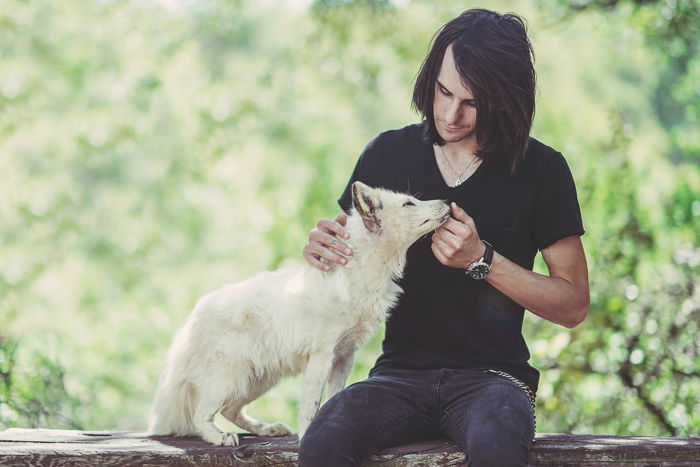
Shallow depths of field are very popular in pet photography right now for a few key reasons.
Wide apertures are great to use when you're photographing a pet in a difficult location. With the depth-of-field being so shallow, whatever troubles you about the background can melt into a beautiful creamy bokeh.
Using an f-stop of f/2.0 or lower helps you work with a less than immaculate location. The shallow depth of field allows you to mask the flaws.
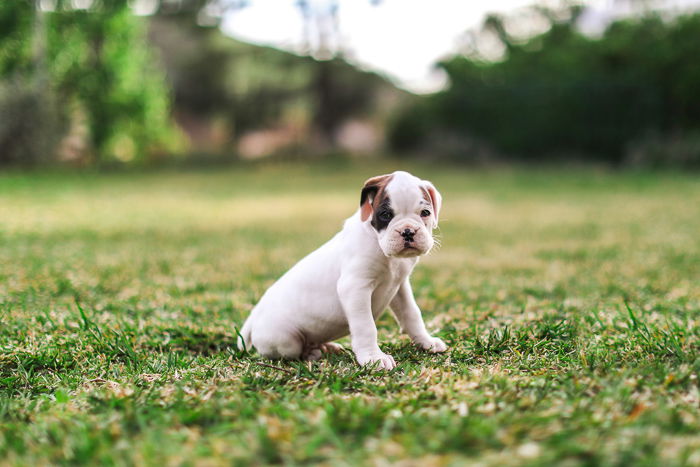
If you're photographing dog sports, such as canine agility, you'll find that the background is very distracting with all of the different colorful obstacles. This is a great opportunity to use a very shallow depth of field to take an eye-catching photograph.
Finding a lens that has a maximum aperture of f/2.8, or around that range, will help you isolate the dog from the cluttered frame.
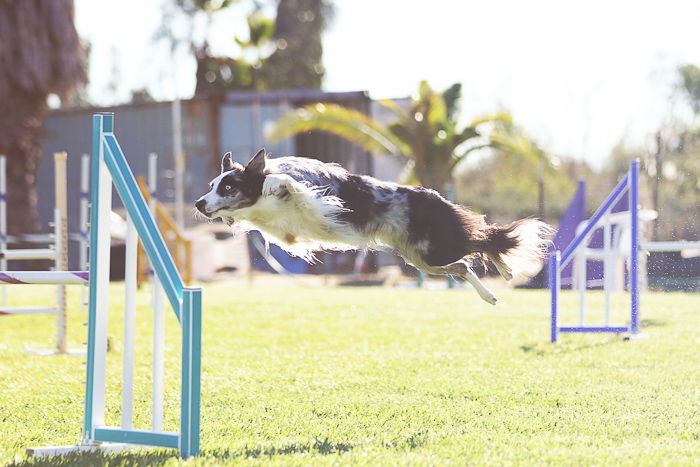
Some of the most sentimental images are detail shots of a beloved pet. From funny markings on a calico cat's nose to the cute paws of a Yorkshire terrier, detail shots are very fun ways to make a pet parent super happy.
A shallow depth of field can make for very beautiful detail shots. This is because photographs taken with a large aperture allow all of the focus to lie on the subject. The background ceases to remain a distraction.
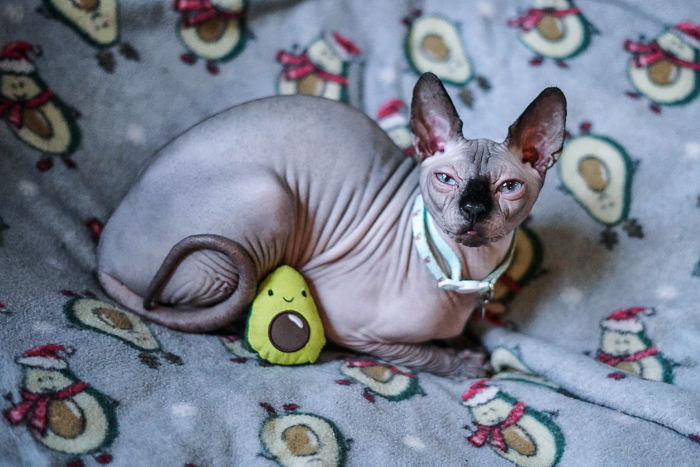
Finally, shallow depth of field can create dreamy, ethereal, or soft photographs. Photographers use wide-open apertures in order to create a soft focus with a shallow depth of field. This gives the viewer the illusion of a dream-like state.
This can also help the cat, dog, and even a rabbit in your photograph have a more stoic impression.
Many hesitate or worry about shallow depth of field because of the focusing issue. With a wide-open aperture, your focal plane is quite small.
When you focus your camera on a subject, it establishes a focal plane. To get your subject in focus, it has to be on the focal plane.
Focal planes happen on an x (horizontal) and y (vertical) axis. This means anything along either of those axes will be in focus, and anything not on them will be out of focus.
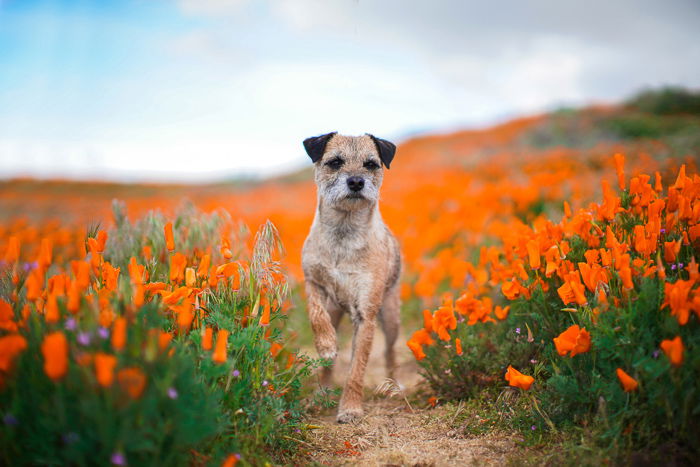
As you decrease your aperture number and make the opening wider, the invisible area in front and behind the plane of focus will get smaller and smaller, leaving you with much less wiggle-room. Distance from the subject plays a key role in your focus.
When shooting wide open, even the smallest diversion from either of the focal plane axes will give you an out-of-focus photo.
You cannot take a step forward or back without the need to refocus when shooting at a wide aperture. By keeping this in mind, you can adjust your photography technique to better accommodate the small focal plane.
Deep Depth of Field
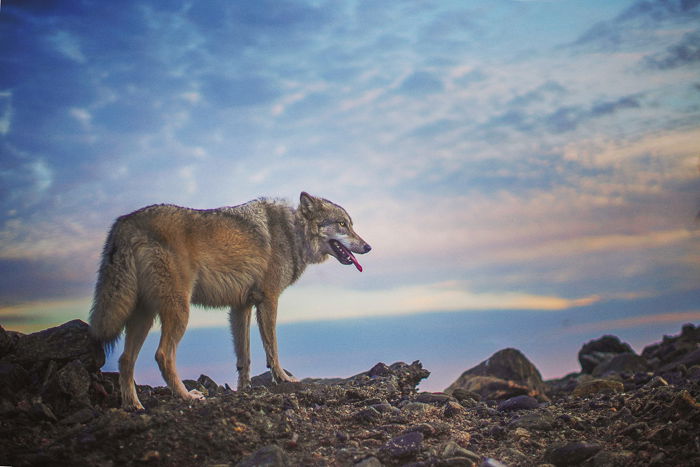
Unlike shallow depths of field, deep depths of field capture everything within the frame. This is useful for beautiful locations in which the scenery is just as much a part of the image as the beautiful horse.
The biggest benefit to a deep depth of field is that achieving focus is easy. There are no sharpness or focus issues when everything is in focus.
This means that you can ensure the dog catching the frisbee will be perfectly sharp. This is useful when you're photographing animals that are moving sporadically. It's easy to lose the focus on shallow apertures unless your camera has an excellent tracking focus setting.
Lots of pet photographers who capture shots of dogs catching a treat will use deeper depths of field. This is to make sure that the treat and the mouth are in focus.
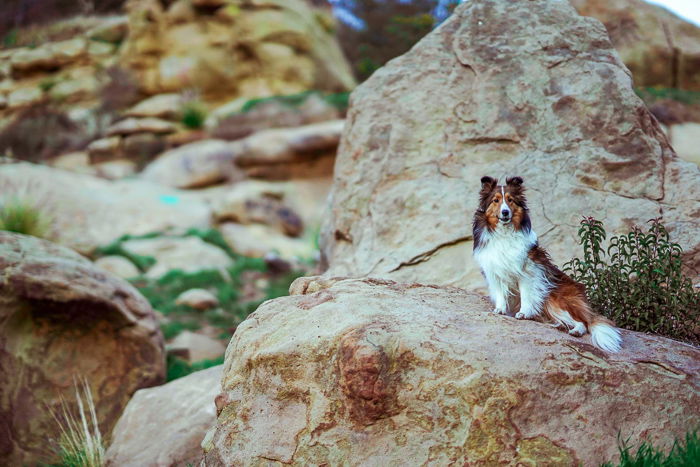
Another benefit is being able to photograph in really bright conditions, which we will get into below.
Aperture and Natural Light
Aperture affects the light intake of your lens. The wider the aperture, the more light comes in. The narrower the aperture, the less light comes in.
Pair this with an ISO and shutter speed setting and that dictates how bright or dark your photograph will come out.
As you may know, your settings will change depending on the natural light present at the shoot location.
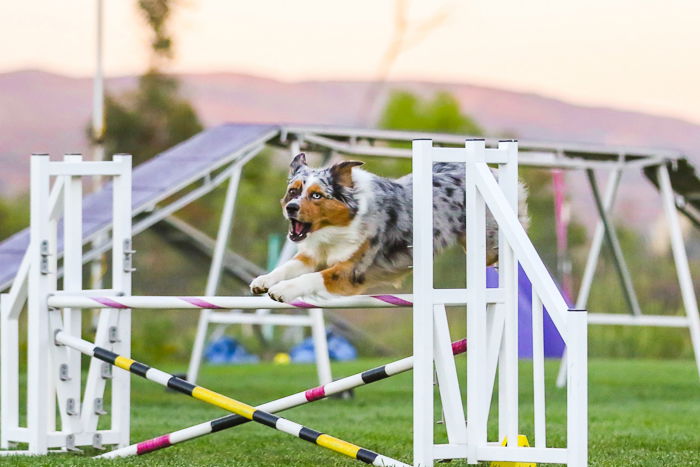
If you find yourself shooting in the most ideal time of day, the golden hour, you can use a shallow or deep depth of field with ease. The golden hour includes the first hour after sunrise and the last hour of light before sunset.
Predicting this short window of time depends on your geographical location and the current season. What makes this lighting situation ideal for photography is the sun's positioning relative to what you are photographing.
Your canvas is neutral with no bright whites or dark shadows. This allows you to use any aperture you desire with ease.
If you're doing a photoshoot in overcast or cloudy conditions, you will have the same benefits as the golden hour. This is akin to a giant softbox diffuser being placed on the sun.
If it is raining, your frame will be dark and cluttered with raindrops. Shallow depths of field are best here.
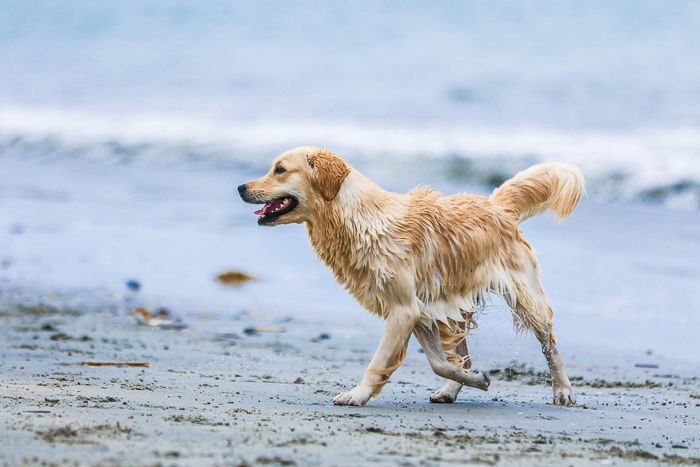
If you're shooting around high noon sun, or when the sun is very high in the sky in the summertime, shallow depth of field can be a bit more difficult.
The solution to this dilemma is taking advantage of tinted filters that darken your lens, such as a neutral-density (or ND) filter. The purpose (and benefit) of an ND filter is to reduce the amount of light entering the lens.
This allows you to use a wide aperture that would otherwise produce overexposed pictures. Deep depth of field, however, does not need any filter to be used in bright sunlight!
If you’re capturing photographs in the snow, this is similar to high noon sun because the snow reflects light. So letting in more light is a mistake here.
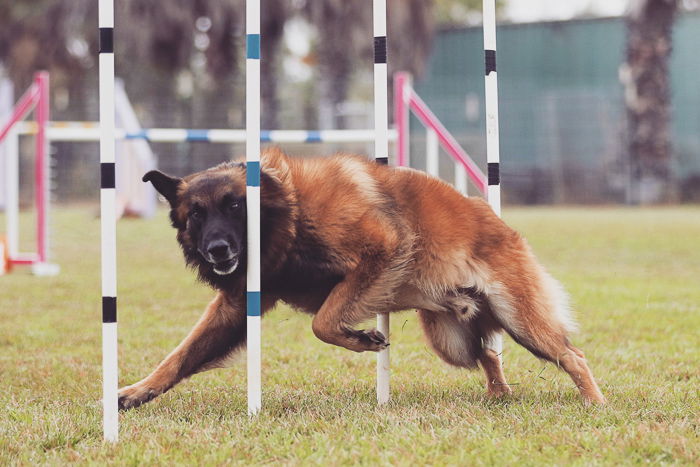
Now, when the sun has set… taking a deep depth of field shot proves to be very difficult. This is because you've lost your available light. If you want to take a well-exposed photo in low light, you need a lens with a wide enough aperture to let in more light.
Using a lens that goes down to f/1.8, for example, is a great way to let enough light in and make the frame bright. Remember, the aperture is the hole the light passes through in your lens.
The wider the aperture, the more light that enters the camera.
If you’re photographing indoors, most tend to use shallower apertures. This is because photographing in someone’s home may show some clutter or distracting furniture.
You can remove these obstacles by blurring them out into a cream bokeh! Bokeh is the name for the blur produced by a shallow depth of field. How shallow depends on the amount of available light.
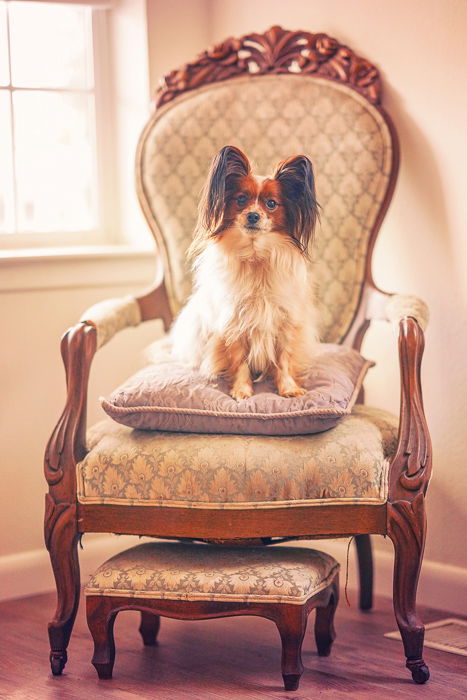
Aperture and Studio Light
Studios are a different story. With a studio, you are able to control the lighting situation significantly. This is because you are using artificial light as a studio is indoors!
If you are using continuous lighting, shallow depth of field will be your friend. This is because continuous lighting may not be bright enough to allow for a super deep depth of field.
Continuous lights are lamps that stay on, instead of flashing.
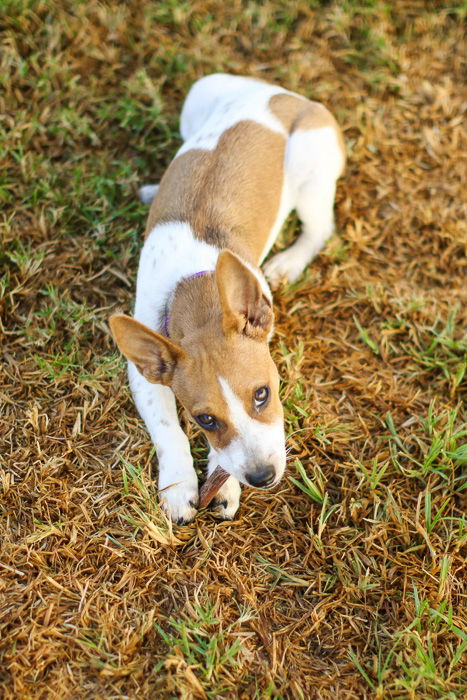
If you are using strobes, shallow depth of field may be letting in far too much light for the intensity of the strobe. Many pet photographers use deeper depths of field when capturing pups with flash units.
Conclusion
And that’s it. With the information in this article, you’ll be able to choose the right aperture for your pet photography shoots.
Keep in mind that we are talking about two extremes in this article – shallow and deep. But depth of field is more of a scale, you can add depth or take it away!
Keep that in mind when selecting what the right aperture is for you.




